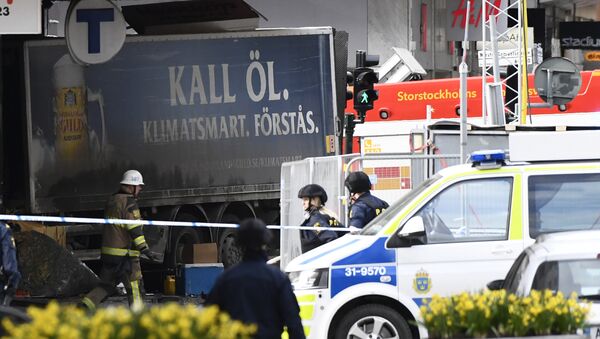While concrete blocks and other physical barriers may arguably provide the best defense against vehicular attacks, they are often aeasthetically unpleasing and are believed to be sending the wrong kind of message to the population.
After the Stockholm truck attack, which killed four, injured 15 and left a heavy impact on the Swedes' sense of security, the Swedish authorities have been at pains to restore it. After first boosting safety measures with extra personnel and additional barriers cleverly stylized after Stockholm's trademark lions, the Swedish government intends to employ geo-fencing to secure Swedish city centers against vehicular attacks.
"The idea is to look at how we can possibly 'speed-limit' one of our people-friendly environments. We intend to condition exactly what transports are allowed within the designated zone," project leader Maria Kraft of the Swedish Transport Administration told Swedish Radio.
This implies a digital surveillance system that can control a vehicle's engine and physically prevent drivers from accelerating faster than, say, 10 or 15 kilometers per hour in congested areas or during peak hours.
By Kraft's own admission, "embryos" of this project are already present in Stockholm and Gothenburg, where certain areas are only allowed to be trafficked by small trucks, whose speed is also greatly limited. Today, the question stands whether it can be broadened using upcoming technologies, Kraft explained.
"At the moment, we are preparing a list of possible measures between two major cities and vehicle manufacturers in a demonstration project," Maria Kraft said. "Some cars won't have access at all to certain areas, such as squares or pedestrian streets, and for the authorized ones you will be able to digitally limit their speed. You can also decide what kind of fuel they should run on," she added.
A geo-fence is a virtual perimeter for a real-world location with a pre-defined set of boundaries. Any unwarranted activity within the perimeter may trigger an alert.
"It's a technique that's been around for quite some time and is about using GPS and satellites to position a vehicle. It is possible to go to the map and designate the route for a vehicle bound for a certain area. Once the vehicle leaves the route, the alarm goes out. If it stays within the 'fence,' it's OK," Volvo Group security expert Carl Johan Almqvist explained to the magazine Computer Sweden.
After the Stockholm attack, Sweden's then-Infrastructure Minister Anna Johansson initiated a meeting between Enterprise and Innovation Ministry, representatives of relevant government agencies, automobile manufacturers such as Volvo and Scania and municipal authorities on the possible use of geo-fencing to reduce the risk of vehicles being hijacked and used in terrorist attacks.




